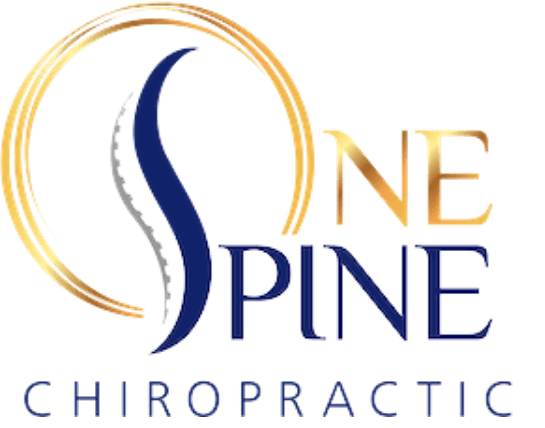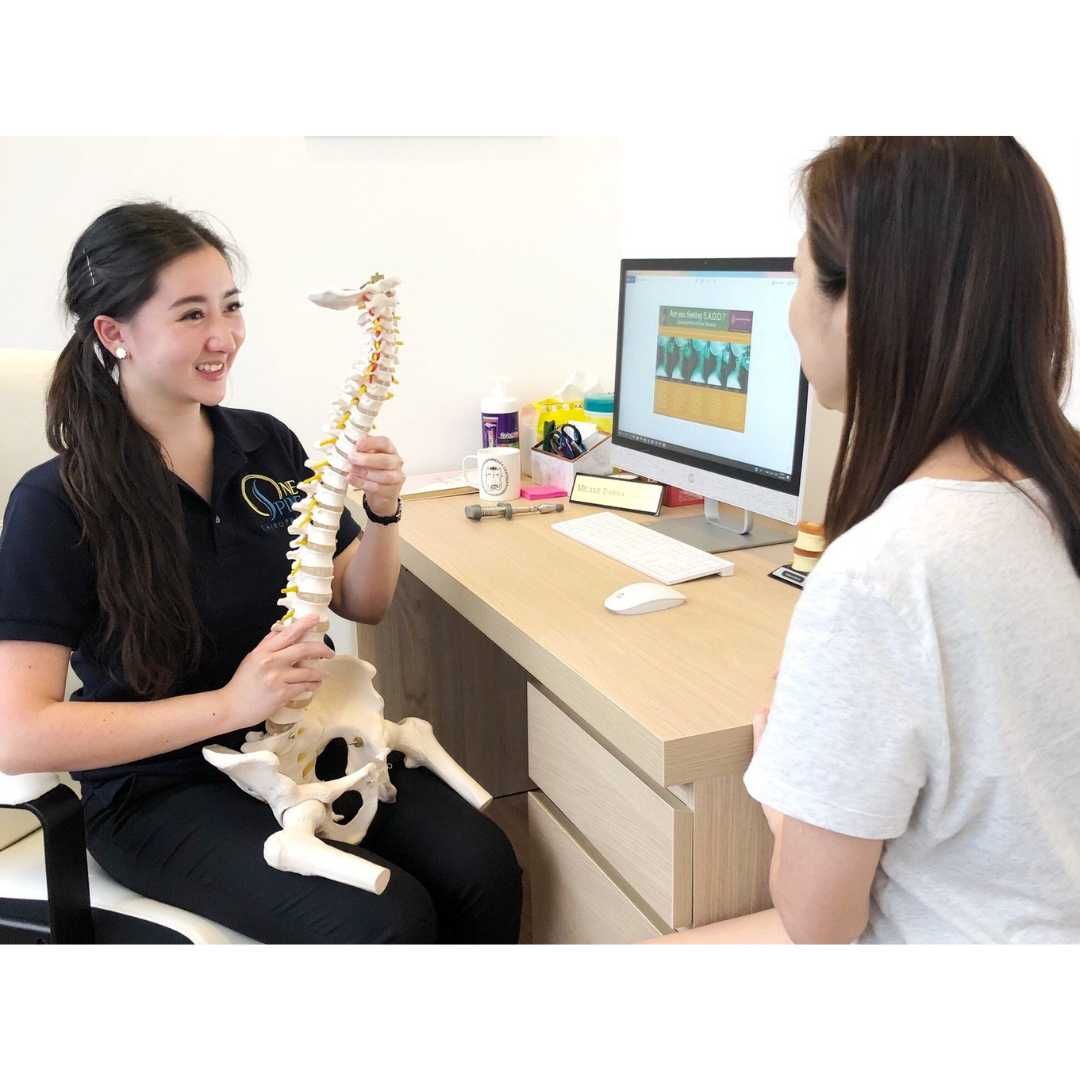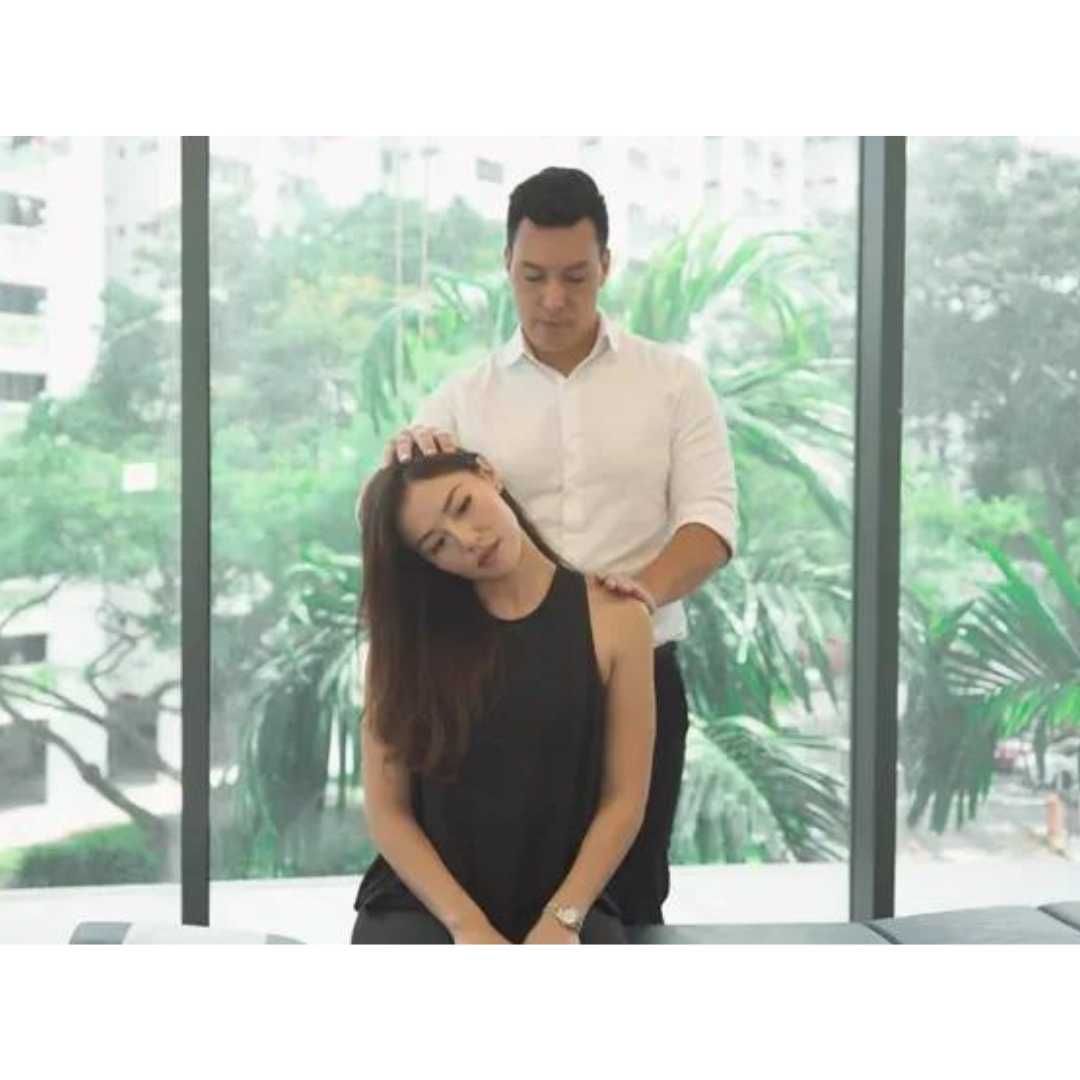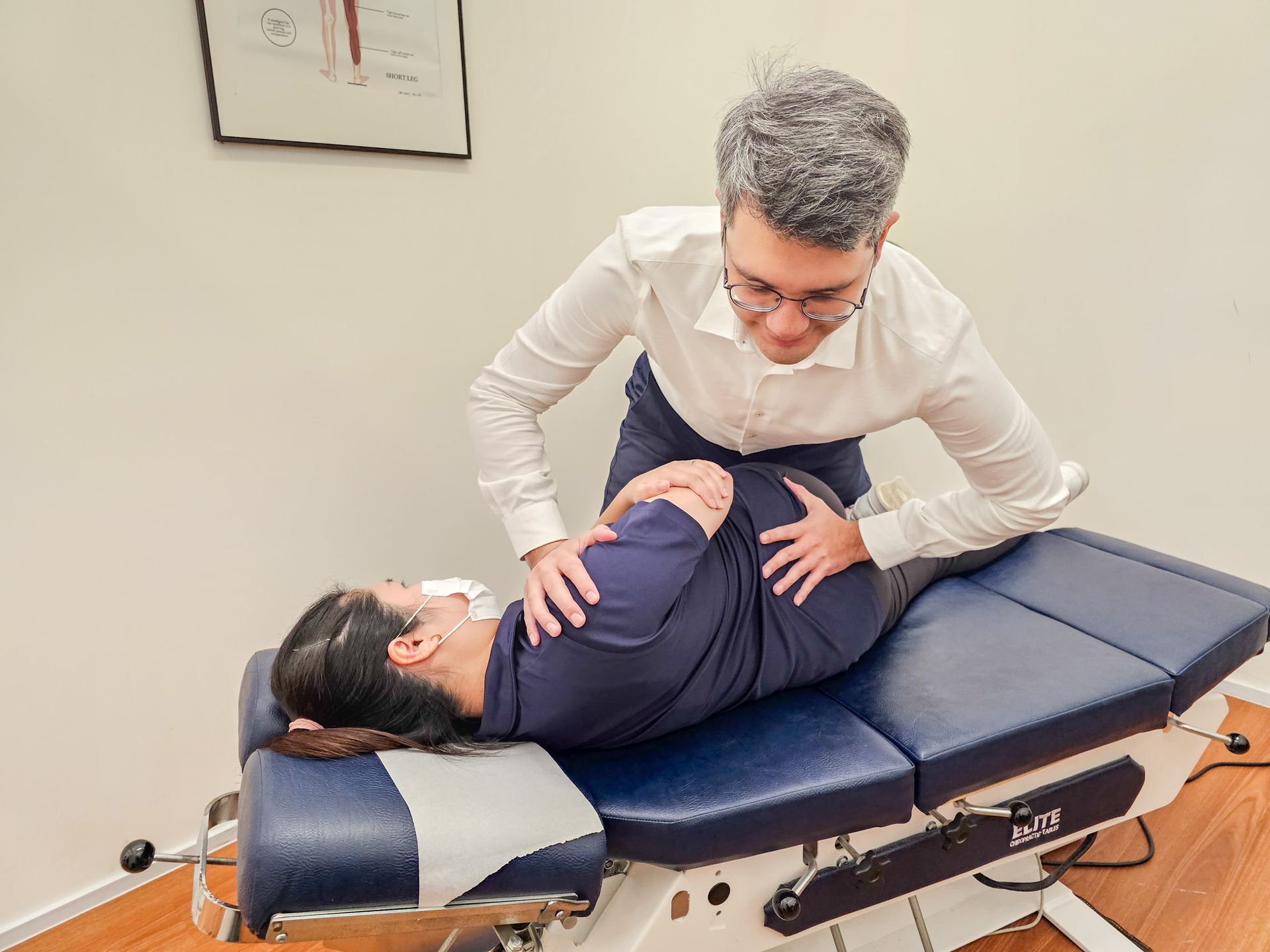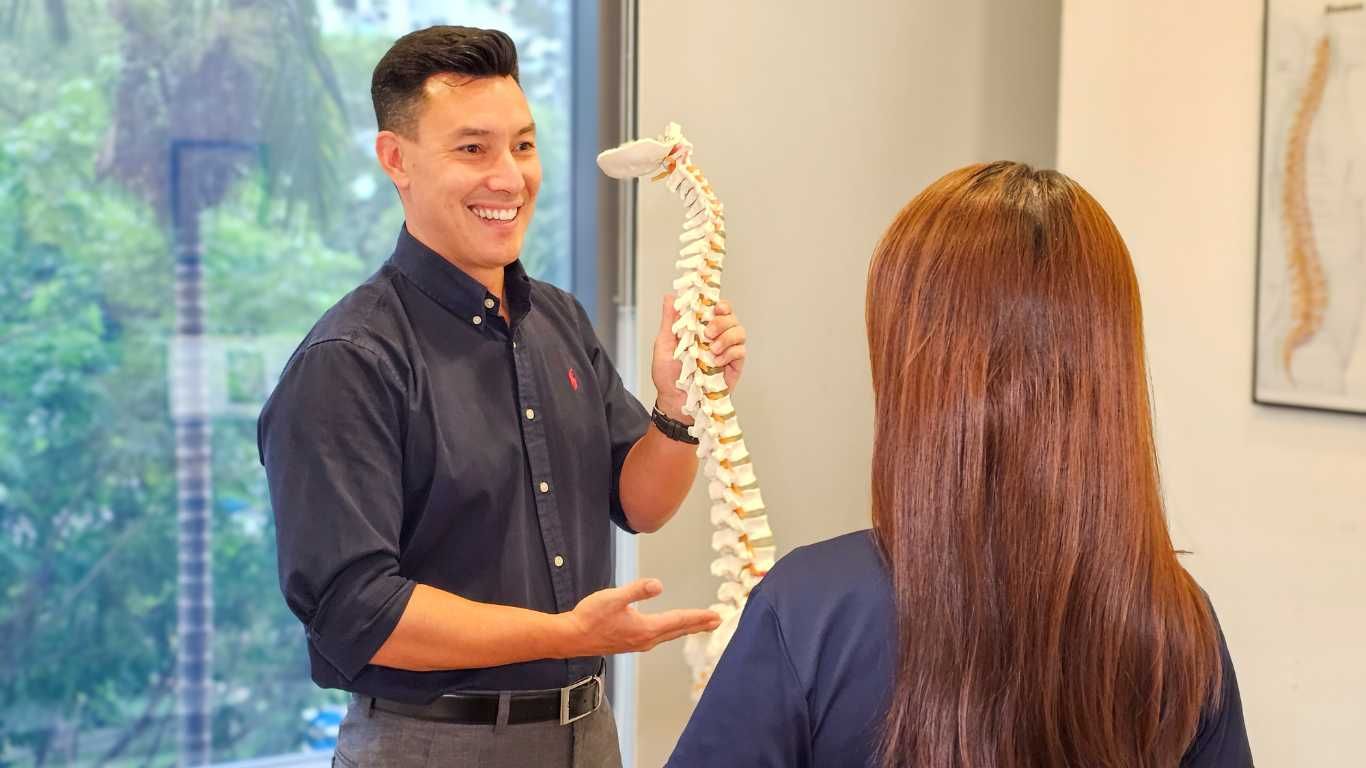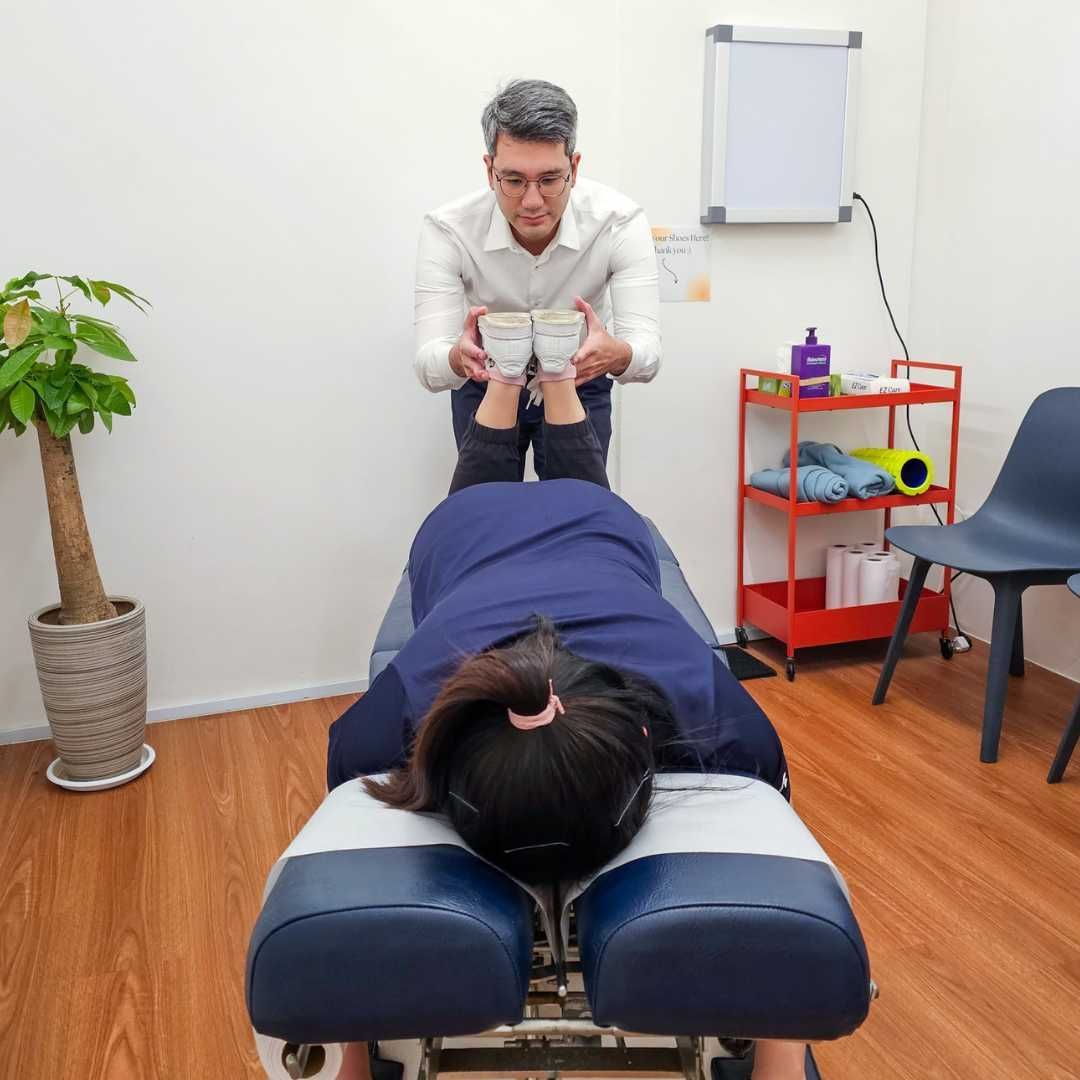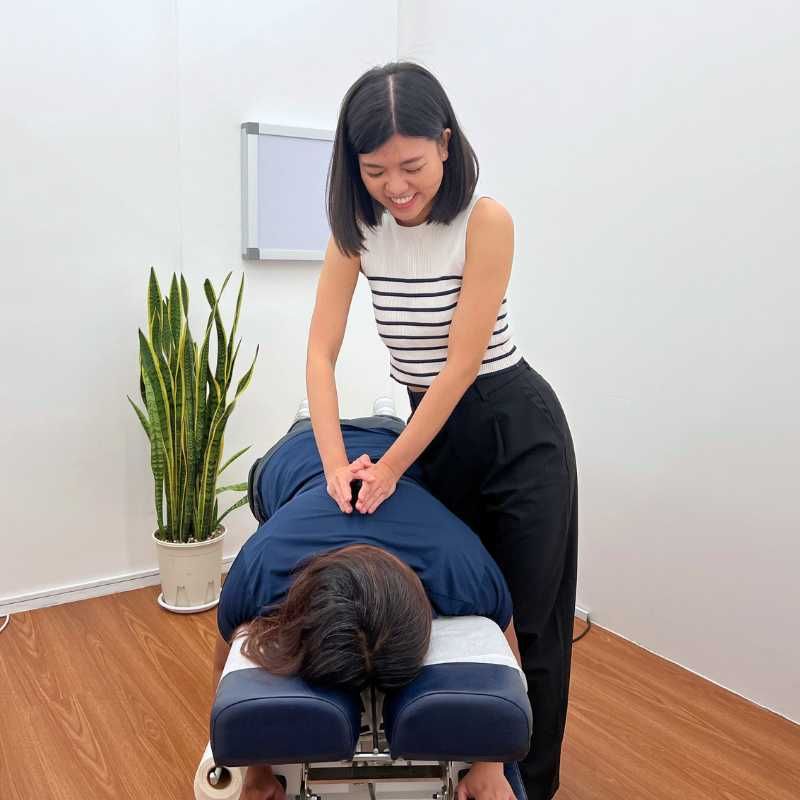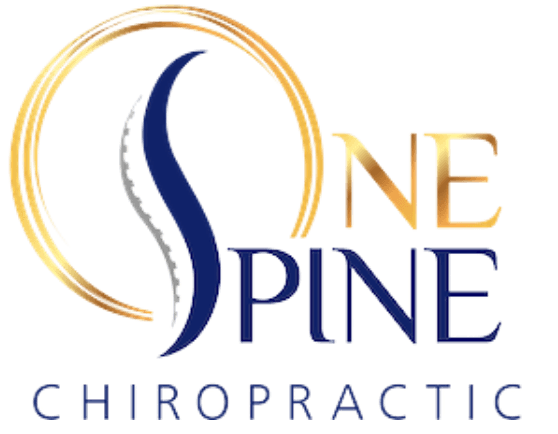Slipped Disc (Herniated Disc) Treatment
A Herniated Disc, commonly known as a slipped disc, is a condition expertly addressed by chiropractors at One Spine.
A herniated disc is where the central core of a spinal disc pushes out through a tear in the outer layer, causing pain and discomfort.
Chances are, you’ve heard of the term ‘slipped disc’ or 'herniated disc' or know someone who suffers from it. So, what exactly are people describing when they say Slipped disc?
The spine is composed of bones cushioned by discs. These discs consist of two layers - a strong outer layer and a gel-like inner layer.
Due to factors such as poor posture, improper lifting techniques, age-related degeneration, trauma or injury, or repetitive motion, the outer layers may weaken or tear, allowing the gel-like inner layer to protrude or extrude.
In such scenarios, seeking expert care becomes crucial. At One Spine Chiropractic, a trusted Singapore chiropractor, we specialise in providing comprehensive solutions for a range of spinal concerns, including slipped discs/herniated discs.
Join us as we explore this condition further and learn how our skilled chiropractors can aid you on the journey to recovery and renewed well-being.
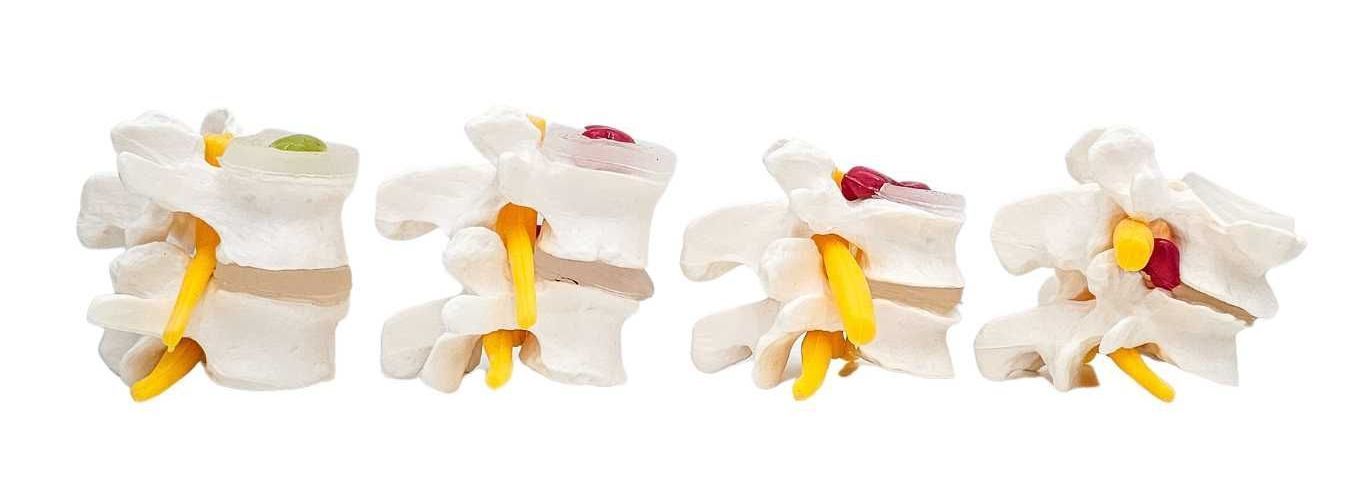
The 4 stages of Disc injury
- Disc protrusion: weakening of the outer layers (anulus) allows central gel called the nucleus to move outwards. Symptoms would be localised and mild to moderate.
- Prolapsed disc: Further weakening of the outer anulus allows central nucleus to move towards the edge of the disc and causes bulging of disc. Symptoms of localised pain and compressed nerves may be present.
- Disc extrusion: a defect in the outer anulus allows herniation of the central nucleus beyond the confines of the disc and extends upward and downward beyond the disc space likely causing nerve compression.
- Sequestered disc: where inner nucleus material completely exits the disc and exits into the surrounding space, often causing pain and nerve symptoms.
These stages represent the progression of disc injury, with each stage indicating a greater severity of the condition. It's worth noting that the term "slipped disc" is commonly used interchangeably with disc protrusion and prolapsed disc in medical discourse.
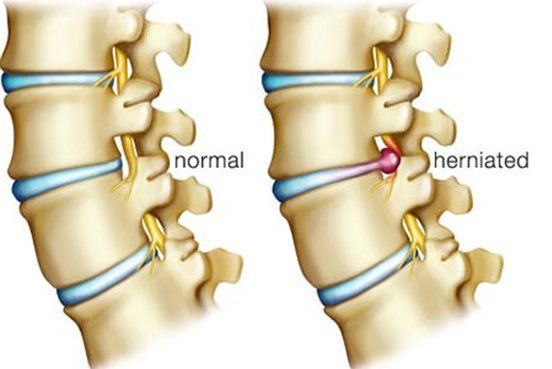
What are the common causes of Disc Injury?
Disc injury can occur due to various factors, including:
- Poor Posture: Maintaining poor posture while sitting or standing for prolonged periods places excessive stress on spinal discs, leading to weakening or tearing of the outer layers.
- Improper Lifting Techniques: Using incorrect lifting techniques, such as bending from the low back instead of bending from the knees, can strain the discs and increase the risk of herniation.
- Age-related Degeneration: As we age, spinal discs naturally lose hydration and elasticity, making them more vulnerable to injury. This degeneration particularly affects the lumbar spine, increasing the risk of issues such as slipped or herniated discs in the lower back.
- Trauma or Injury: Sudden impacts or traumas, even minor strains like falls or car accidents, can cause discs to herniate.
- Repetitive Motion: Engaging in activities involving prolonged repetitive motion, especially with poor body mechanics, can gradually wear down the discs and lead to herniation.
These factors collectively contribute to the risk of slipped disc/herniated disc, emphasising the importance of maintaining proper posture, using correct lifting techniques, and being mindful of body mechanics during activities to safeguard spinal health.
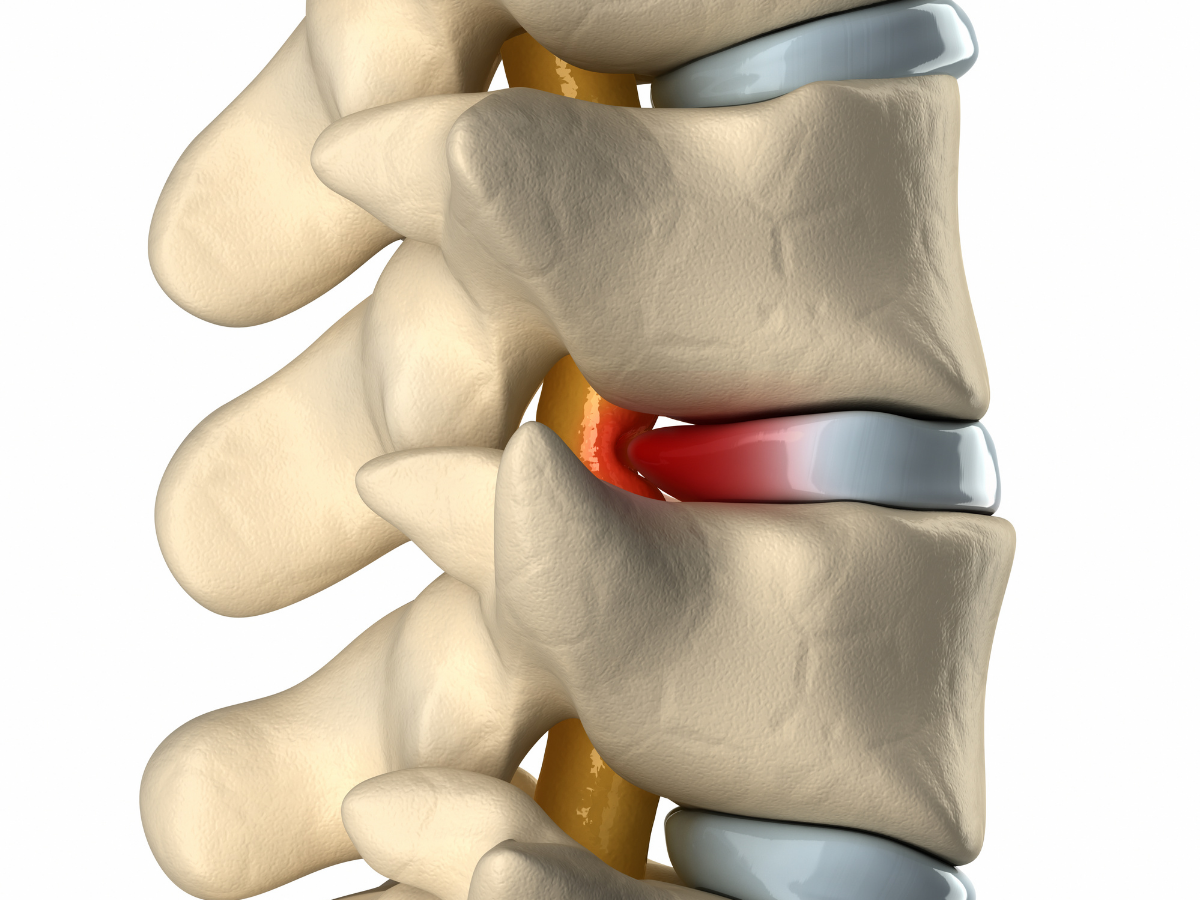
What Are the Symptoms of a Disc Injury?
The symptoms of a slipped disc injury can vary depending on the location and severity of the damage and amount of disc herniation. Common signs and symptoms include:
- Pain: The most common symptom of a slipped disc is localised pain at the site of the herniation. This pain can range from sharp and shooting to a dull ache. If the herniated disc compresses nerve roots, the pain may radiate to other areas, such as the arms or legs. A slipped disc can cause leg pain due to nerve compression.
- Numbness or Tingling: Compression of nerve roots by herniated discs can result in numbness, tingling, or a pins-and-needles sensation in the arms, hands, legs, or feet.
- Muscle Weakness: The nerve signal to muscles may be affected when inner nerve fibers become compressed. Leading to weakness or difficulty performing certain movements or activities.
- Loss of Reflexes: In some cases, a slipped disc can cause a loss of reflexes, such as the knee or ankle reflexes.
- Limited Range of Motion: Herniated discs can restrict the normal movement of the spine, leading to a reduced range of motion and stiffness.
The compression caused by a slipped disc on the spinal canal, nerve root, or spinal cord can cause specific symptoms in different parts of the body.
For instance, if the herniated disc is in the lower back (lumbar region), it may result in pain, numbness, or weakness in the buttocks, legs, and feet. This condition is commonly known as sciatica because of the involvement of the sciatic nerve that forms from the L4 - S3 nerve roots.
On the other hand, a slipped disc in the neck (cervical region) can lead to symptoms such as neck pain, shoulder pain, arm pain, and even radiating pain down to the fingers. A slipped disc compresses nerves, leading to severe symptoms like loss of sensation, bowel or bladder control issues, and potentially severe surgical interventions.
Don't let Slipped Disc control your life.
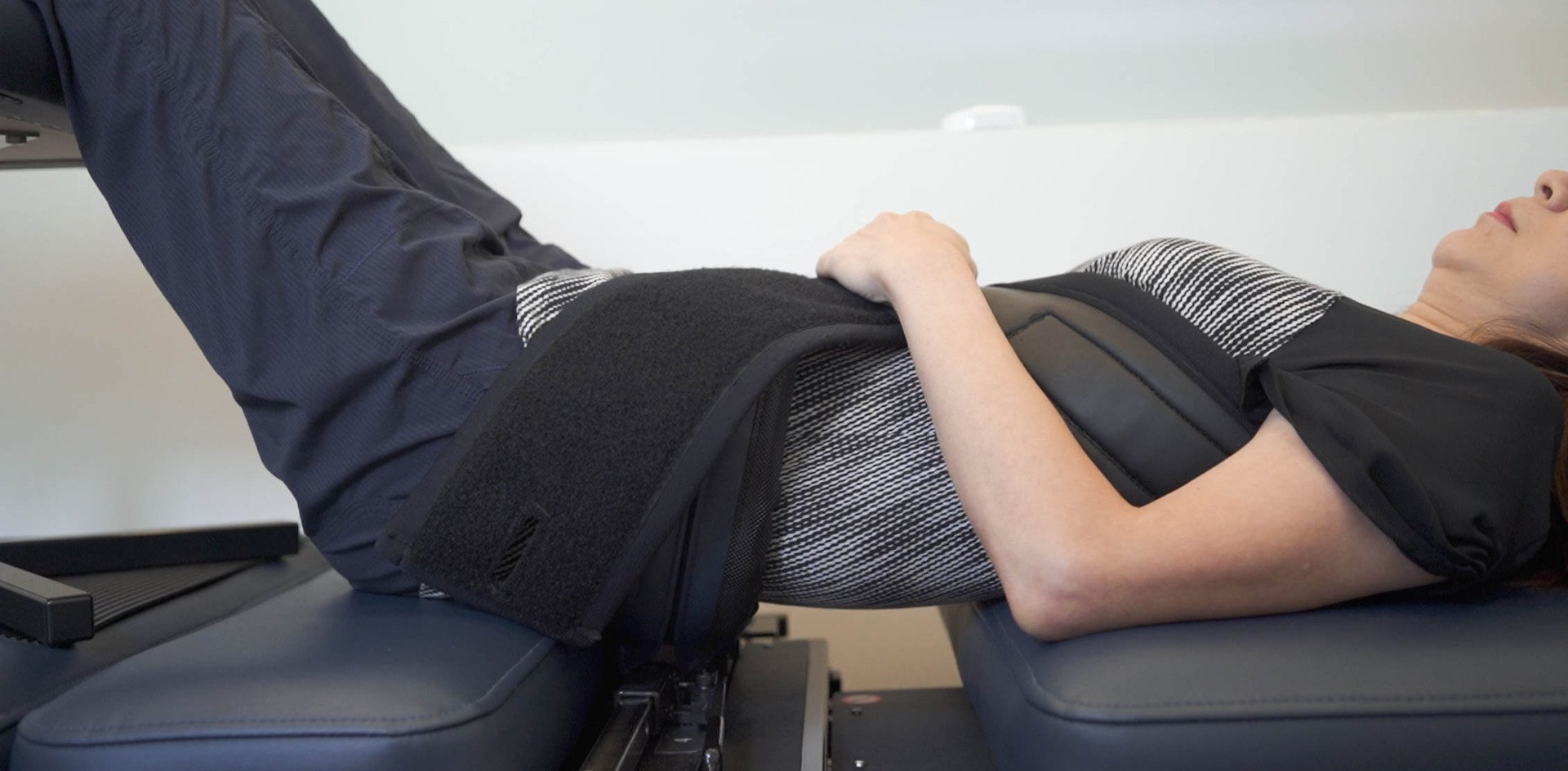
How Chiropractors Managed Slipped Discs/Herniated Disc?
- Expertise in Disc Injuries: Our chiropractors possess extensive expertise in diagnosing and treating intervertebral disc injuries. We have a deep understanding of how disc injuries occur and the most effective methods to alleviate pain and restore functionality.
- Non-Invasive Approach: We believe in utilising non-invasive techniques to treat slipped discs. Our chiropractic care focuses on restoring proper alignment, relieving pressure on nerve roots, and promoting natural healing. By employing gentle adjustments and targeted therapies, we aim to minimise discomfort and maximise results.
- Personalised Treatment Plans: We recognise that each individual is unique, and their spinal disc condition may vary. That's why we provide personalised treatment plans tailored to your specific needs. Our chiropractors will conduct a thorough assessment to determine the extent of your slipped disc and develop a plan that addresses your condition and goals.
- Holistic Care: At One Spine, we prioritise holistic care that goes beyond just alleviating symptoms. While our primary focus is on treating the injured disc, we also aim to improve your overall spinal health. By addressing postural imbalances, ergonomic practices, and providing exercises to strengthen your core and support your spine, we promote long-term well-being and help prevent future disc damage.
Our Vertebral Disc Treatment Approach:
- Thorough Assessment: Our chiropractors will begin by conducting a comprehensive evaluation, which may include a detailed discussion of your symptoms, medical history, and imaging tests such as X-rays. This assessment helps us understand the extent of your disc injury and develop an accurate diagnosis.
- Gentle Spinal Adjustments: Through gentle spinal adjustments, our chiropractors will carefully realign your spine, reducing pressure on the affected disc and nerve roots. These adjustments are performed with precision and aim to restore proper spinal function while minimising discomfort. Depending on the severity of the injury, we may recommend additional imaging, such as X-rays, to provide a more detailed view of the affected area. These adjustments help maintain the structural integrity and mobility of the spinal column.
- Therapeutic Modalities: In addition to spinal adjustments, we may incorporate various therapeutic modalities to enhance the healing process. These may include electrical stimulation, ultrasound, or therapeutic exercises tailored to your specific needs. Such treatments can relieve pressure on the spinal nerve, alleviating symptoms and promoting recovery.
- Decompression Therapy: We use spinal decompression to gently stretch the spine, discs and muscles with the goal of relieving pressure and improving the health of vertebral discs.
- Posture and Lifestyle Recommendations: We believe in empowering our patients with knowledge and tools to prevent future disc damage. Our chiropractors will provide guidance on maintaining proper posture, ergonomic practices, and exercises to strengthen your core muscles and support your spine. In some cases, we may recommend specific exercises that can be incorporated into a physical therapy routine.
- Ongoing Support and Maintenance: Our commitment to your well-being extends beyond the initial treatment phase. Once your symptoms improve, we will work with you to develop a maintenance plan that supports a healthy spine and minimizes the risk of future disc injuries. This plan may include periodic visits for adjustments, as well as recommendations for exercises or stretches that can be integrated into a physical therapy regimen.
Take the First Step Towards a Healthy You!
Surgery is usually the last resort as it is invasive and does not always result in predictable results.
Don't let the pain and limitations of a slipped disc hold you back from enjoying life to the fullest.
At One Spine, our experienced chiropractors are dedicated to providing effective and personalised care for slipped discs.
We understand the impact that a slipped disc can have on your daily life, and we are here to help you find relief and restore your health.
Book An Appointment Now
Take control of your slipped disc pain and reclaim your life.
Contact One Spine Chiropractic today to schedule a consultation and take the first step towards a pain-free life.
